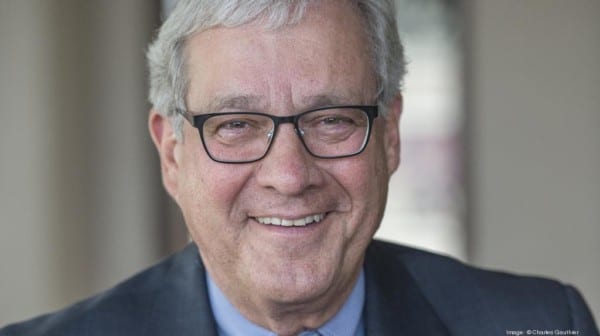As schools scrambled to remain in operation last fall, Tamara Allard, a Ph.D. student in developmental psychology, found herself not only balancing her own mental health on top of her research and work responsibilities, but also the mental health of over 100 students she supported as a teaching assistant.
Throughout the past year, multiple organizations and studies have shown that the pandemic has had a devastating effect on student mental health. Active Minds, the Chronicle of Higher Education, Gallup, and more all published reports on COVID-19 and the student mental health crisis. On the flip side, there was an increased focus on supporting faculty and instructor wellbeing, who were seen as the frontline in addressing student emotional needs. While more services are needed to address the issue on all fronts, there are few structures in place to support graduate students, who commonly straddle both teaching and student roles, among others.
Grad students may be the sole breadwinner of their family and require extended funding for their research. They may be parents or spouses who need childcare and are struggling with balancing family responsibilities with work. A survey of over 3,500 students conducted by Olgilvie et al., (2021) found that around a third of graduate students reported moderate to higher levels of anxiety and depression. Another survey by the Jed Foundation found that only half the institutions out of over 200 had any type of model to support graduate student wellness.
Although COVID-19 significantly exacerbated these gaps, graduate student mental health has been a concern for far longer. For Allard, her struggle with her emotional wellness started much earlier in her graduate career, when she moved across the country from Washington State to the University of Maryland (UMD) for her degree. Like many other new students, she was entering a novel environment with increased responsibilities, all while lacking a strong physical support system during the transition.
While more services are needed to address the issue on all fronts, there are few structures in place to support graduate students, who commonly straddle both teaching and student roles, among others.
“This makes the perfect storm. You’re taking on more responsibility than you ever have in your life; I have had times where I have been working 60-80 hours a week in research, teaching, classes, etc.,” she said. “The beginning can be really challenging; you’re taking on all this extra stress and you’re lonely—it’s amazing if you haven’t had an episode of anxiety or depression.”
When Allard finally made the decision to seek professional help, she found herself on a waitlist for individual counseling services at UMD’s counseling center. The catch: it was over six months backed up. It would take another three-to-four months for her to find and start with a private therapist the center recommended.
Her experience is echoed by a widely-cited study from 2018 which found that compared to the general population, graduate students were more than six times more likely to suffer from depression, with women and gender-nonconforming students at increased risk (Evans et al., 2018). Correlated factors included negative work-life balance and a lack of support and mentorship from their principal investigator or advisor. Studies at individual universities such as UC Berkeley’s 2014 Graduate Student Happiness & Well-Being Report further show that there may be discrepancies between Ph.D. and master’s students, with almost half of Ph.D. students (47%) reporting high levels of depressive symptoms compared to 37% of master’s students. An even older 2004 study also from Berkeley revealed similar findings, with 57.7% of polled students reporting a stress-related issue over the last year (Hyun et al., 2004). Over the past decade, these trends have shown that little has changed to assuage student concerns.
However, a commonality between all three studies is the importance of social and institutional support, which have commonly translated poorly in virtual settings. With the transition to a new career stage already difficult, new graduate student Haley Mullen found herself relying much more on old support systems from college and home rather than her programs.
Mullen, who moved to the University of Michigan for a master’s in Environmental Justice and Geospatial Science, found it difficult to meet and connect with any of her classmates, even in 20-30-person classes. While the department offered Friday socials, they were open to anyone, and there were few options to bond with people specifically in her program.
“There was an effort, but it wasn’t sufficient in my opinion,” she said. “I feel like they could’ve provided more resources for students new to the area.”
Despite the lack of social connection, her professor and advisor relationships became important in easing the transition. Key points included additional flexibility and leniency to students in assignments, availability to meet when needed, and offering additional support to her thesis.
However, not everyone found the same accommodating nature of Mullen’s advisors from their own faculty. Jennifer Enriquez, a coordinator for graduate student life at UMD, spoke with many students 1-on-1 and in groups, finding that faculty mentors may not be fully aware of the challenges their students may be facing or may never have been adequately trained in good mentorship practices.
“I sit on various committees — that includes the graduate school council, and from just listening in those meetings, a lot of them don’t have a good understanding of the day-to-day experience or reality of graduate student life,” Enriquez said. “Whoever your mentor is can really have a large impact on your experience; if it’s not a good or equitable relationship, you can walk away from grad school with burnout.”
The problem is even more stark for international students, who comprise about a third of the students Enriquez services. Due to federal policy, most were isolated from other students conducting work in their home country during the pandemic, with their direct mentor potentially serving as their main connection to the university. They may also be exempt from crisis funds or other resource pools available to other students, which adds additional stressors in finance and food insecurity.
Driven by her own experiences, Allard, the incoming graduate student government president-elect, plans to push for more counselors and more funding for the Counseling Center. She also aims to maintain an open-door policy for her constituents and to recruit more members for graduate student government to ensure that all voices are heard.
“What I can say is we’re going to try really hard, part of that is making sure students can have one-on-one counseling, affordable student housing, and community building,” Allard said.
Allard’s plans are in-line with recommendations brought forward by the Jed Foundation, which include involving students as stakeholders via surveys and focus groups, dedicating funding towards mental health campaigns, and incorporating multiple offices on campus in creating plans for student wellness.
For example, Arizona State University’s Graduate College works with Health Services, Counseling Services, the Dean of Students, and the Graduate and Professional Student Association to identify gaps in resources and incorporate mental health conversations into various aspects of student life, such as teaching assistant training, webinars, and orientation. Several other universities have also developed specific initiatives which target vulnerable groups, such as Kent State University’s first-generation graduate student affinity group.
Additionally, shifting mentorship relationships away from a student’s pure academic or research performance to their holistic well-being is vital in establishing another source of support for students and reducing points of stress around program milestones. At the University of Buffalo, students have the opportunity to seek additional faculty mentors from the NEAR program outside of their immediate research areas. Faculty volunteers undergo mentorship training to understand campus resources and offer an opportunity for students to discuss topics such as minority experiences which they may not be comfortable discussing with department advisors.
Moving forward, universities should use a stronger lens to examine the structural issues impacting the wellness of their graduate students, whether it be mandatory workshops for faculty mentors, increased financial and housing resources, or implementing processes that directly incorporate student voices.
“As a university, we could do a stronger job in advocating for certain things,” Enriquez said. “You may not necessarily be able to change outcomes, but you can at least put a stronger voice in backing up your students.”




